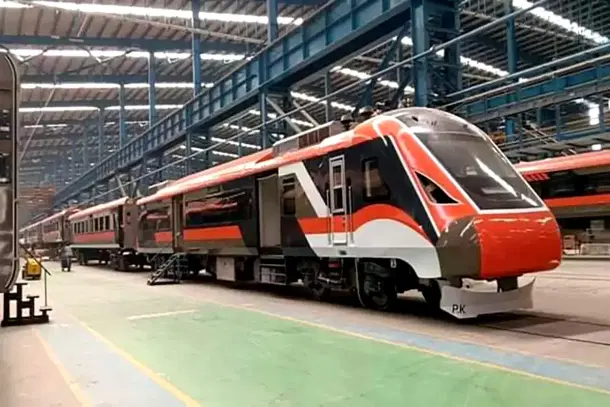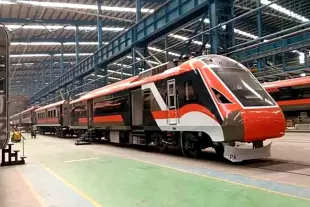Infrastructure
India's First Vande Metro Rolls Out, Trials Set To Begin In July For Short Commutes Up To 250 Km
V Bhagya Subhashini
May 01, 2024, 04:41 PM | Updated 04:48 PM IST
Save & read from anywhere!
Bookmark stories for easy access on any device or the Swarajya app.


India's first Vande Metro train, a shorter-distance iteration of the esteemed Vande Bharat Express, made its debut at the Integral Coach Factory in Chennai on Tuesday (30 April), heralding a new era of rail travel designed to elevate the commuter experience.
Vande Metro is tailored to serve passengers travelling distances of up to 250 km, offering a refined journey for urban commuters. These trains are slated to operate along routes spanning between 100 km and 250 km, with another variant in development, the Vande Bharat sleeper trains, designated for routes exceeding 1,000 km.
The trial phase for Vande Metro trains is slated to commence in July, followed by subsequent testing of the sleeper variant, marking a significant stride towards modernising India's rail infrastructure and enhancing commuter convenience.
In line with the ambitious plans outlined by the Railway Ministry, Vande Metro trains are poised to connect 124 cities across the country. Initial routes identified include Chennai-Tirupati, Bhubaneswar-Balasore, Agra-Mathura, Delhi-Rewari, and Lucknow-Kanpur. Additionally, there are deliberations to extend connectivity across Tamil Nadu, potentially linking Chennai to Arakkonam, pending finalisation.
Operating seamlessly on existing railway tracks, these air-conditioned trains are geared towards accommodating passengers commuting between major urban centres and adjacent satellite towns, with a particular emphasis on facilitating unreserved category travellers.
Officials emphasised that Vande Metro trains boast rapid acceleration capabilities and frequent stops, ensuring efficient transportation. Each train will feature 12 coaches equipped with spacious automatic doors and side seats, optimising standing room for passengers, reports dtnext.
In anticipation of heightened demand on busy routes, officials confirmed the flexibility of expanding these trains to accommodate up to 16 coaches, further enhancing capacity.
V Bhagya Subhashini is a staff writer at Swarajya. She tracks infrastructure developments.





